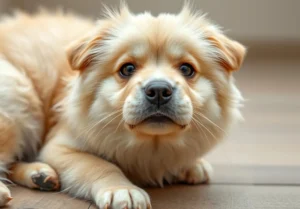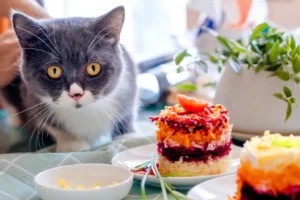Cats are fascinating creatures with many unique characteristics, and one of the most intriguing aspects of a cat is its tail. Have you ever wondered why cats’ tails are so hard? Let’s find out.
The Function of a Cat’s Tail
Have you ever wondered why cats’ tails are so hard? Well, let’s delve into the primary purpose of a cat’s tail and why it’s essential for their survival and overall well-being.
A cat’s tail is not just a fluffy accessory; it serves a crucial function in their daily lives. One of the primary purposes of a cat’s tail is balance. Yes, you heard it right – balance! Cats are known for their incredible agility and grace, and their tails play a significant role in helping them maintain stability as they navigate various terrains and heights.
Imagine a tightrope walker without their balance pole – it would be quite a challenge, right? Well, the same principle applies to cats. Their tails act as a natural counterbalance, allowing them to make sharp turns, leap from high places, and land gracefully on their feet. So, the hardness of their tails is crucial for providing that structural support they need for balance and coordination.
Additionally, a cat’s tail is also a communication tool. Cats use their tails to express their emotions, whether they are feeling happy, scared, or irritated. The stiffness of their tails can convey important cues to other animals or even their human companions. For example, a fluffy tail held high indicates a content cat, while a stiff, bristled tail may signal aggression or fear.
In essence, the hardness of a cat’s tail is not just a random characteristic but a vital component of their anatomy that serves various functions essential for their well-being. So, the next time you see a cat gracefully maneuvering its way through your living room, remember to appreciate the incredible balance and communication abilities facilitated by its hardtail.
Anatomy of a Cat’s Tail
Have you ever taken a closer look at a cat’s tail and wondered what makes it so hard? Let’s explore the specific physical characteristics that contribute to the hardness of a cat’s tail, from the bones to the muscles and fur.
Bones : A cat’s tail is composed of several small vertebrae that are connected by muscles and tendons. These bones provide structure and support to the tail, contributing to its rigidity. Unlike other mammals, a cat’s tail is not as flexible due to the limited range of motion of these vertebrae.
Muscles : The muscles in a cat’s tail are responsible for controlling its movements. These muscles allow the cat to swish its tail back and forth, which is often a sign of agitation or excitement. The strength and flexibility of these muscles also contribute to the hardness of the tail.
Fur : The fur covering a cat’s tail provides insulation and protection. While the fur itself may not directly contribute to the hardness of the tail, it adds to the overall thickness and texture of the tail, giving it a hard appearance.
So, the next time you pet a cat and feel its hard tail, remember that it’s not just a random trait but a result of the intricate anatomy that makes cats such fascinating creatures. Appreciate the bones, muscles, and fur that work together to create that distinctive hardness you feel.
Evolutionary Factors
Cats’ tails have evolved to serve multiple functions, including balance, communication, and even temperature regulation. The hardness of a cat’s tail can be attributed to the structure of the bones and muscles within it. Over evolutionary time, cats have developed strong muscles and bones in their tails to support them in various activities such as hunting, climbing, and navigating their environment. This increased hardness provides stability and strength, allowing cats to use their tails effectively in different situations.
Communication and Emotion
A cat’s tail is a vital tool for communication and expressing emotions. When a cat holds its tail upright and puffs it out, it signals confidence and aggression. On the other hand, a tail tucked between the legs indicates fear or submission. The hardness of a cat’s tail plays a role in these communication cues. A stiffer tail may indicate alertness or agitation, while a relaxed and loose tail suggests comfort and contentment. Cats use their tails to convey a wide range of emotions, from excitement to irritation, making them essential for understanding feline behavior.
- Additionally, when a cat wraps its tail around you, it is a sign of affection and trust. Pay attention to the position and movement of a cat’s tail to better understand how they’re feeling and what they’re trying to communicate. Take note of any changes in tail hardness or position to gauge your cat’s emotional state more accurately.
Environmental Adaptation
Have you ever wondered why cats’ tails are hard? Well, it turns out that their tails are not just for balance and communication but also for environmental adaptation. The hardness of a cat’s tail helps them thrive in their natural environment by providing support and stability in various terrains. From climbing trees to chasing prey, a sturdy tail is essential for cats to navigate their surroundings effectively.
In the wild, cats face different challenges like rough terrain, uneven surfaces, and unpredictable environments. The hardness of their tails allows them to maintain balance and coordination, making it easier to traverse through forests, bushes, and fields without losing their footing. This adaptation is crucial for their survival and hunting success, as it enables them to move swiftly and silently when stalking their prey.
So, the next time you see a cat with a stiff tail, remember that it’s not just a random feature – it’s a remarkable adaptation that helps them conquer the great outdoors with agility and grace.
Grooming and Care
When it comes to grooming our furry feline friends, we often overlook the importance of caring for their tails. A cat’s tail may look tough on the outside, but it requires regular maintenance to keep it clean and healthy. The hardness of a cat’s tail can make grooming a bit challenging, but it’s crucial to ensure your cat’s overall well-being.
To groom a cat’s tail effectively, use a soft-bristled brush or comb to remove dirt, debris, and tangles gently. Pay special attention to the base of the tail, where oil glands are located, to prevent matting and skin issues. Regular grooming also helps distribute natural oils along the tail, keeping it shiny and free from dandruff.
Remember, grooming is not just about keeping your cat looking good; it’s also about promoting their physical and emotional health. So, the next time you pamper your kitty, don’t forget to show some love to their tail too.
Additional Unique Insight:
– Tailored Treatments: If your cat’s tail seems unusually hard or stiff, it may be a sign of an underlying health issue. Consulting a veterinarian for tailored treatments and recommendations can help address any potential concerns and ensure your cat’s tail stays in top shape.
Ensure to prioritize your cat’s tail grooming and care routine to maintain their overall health and happiness for years to come.
Interesting Facts About Cat Tails
Cats have an amazing ability to communicate through their tails. A hard tail, usually held upright, can signify excitement or affection. Conversely, a flickering tail might indicate agitation or annoyance.
Did you know that a cat’s tail is crucial for balance? It acts as a counterbalance, allowing them to make precise movements and land on their feet effortlessly.
Another interesting fact is that a cat’s tail contains almost 10% of their total bone count, with an average of 19 to 23 vertebrae. This structure gives the tail its characteristic flexibility and strength.
The Symbolism of a Cat’s Tail
In many cultures, a cat’s tail is seen as a reflection of its mood and intentions. For example, in ancient Egypt, cats were revered for their grace and poise, and their tails were considered symbols of prosperity and good luck.
In Japanese folklore, the Maneki Neko (beckoning cat) is a popular talisman believed to bring good fortune. The raised paw and often waving tail symbolize the cat’s welcoming and inviting nature.
Furthermore, in Native American traditions, the tail of a cat represents independence, stealth, and agility. Cats were seen as spiritual guides, leading individuals through challenges with grace and wisdom.
Additional Insight: In Norse mythology, the goddess Freyja is often depicted riding in a chariot pulled by two cats with impressive tails. These felines were believed to possess magical powers and their tails symbolized strength and protection.
Conclusion: The Mysteries of Cat Tails Unveiled
So, why are cats’ tails hard? It all comes down to a combination of bone structure, connective tissue, and muscle composition. Cats have a unique design that allows their tails to be both flexible and firm, providing balance, communication, and even a bit of protection.
Throughout this exploration, we’ve uncovered the fascinating reasons behind the hardness of cat tails. From the presence of vertebrae to the specialized tendons and ligaments, these feline appendages serve a variety of purposes that contribute to the overall agility and grace of our furry friends.
Next time you see a cat flicking its tail in curiosity or holding it high in confidence, remember the intricate design and functionality that lies beneath the surface. It’s a true testament to the incredible adaptability of these captivating creatures.
And remember, the next time you pet a cat and feel its firm tail, you’ll have a deeper understanding of the remarkable biology and behavior that make our feline companions so unique. Embrace the mystery and marvel at the beauty of our purring pals!
Alex, a passionate animal lover, has experience in training and understanding animal behavior. As a proud pet parent to two dogs and three cats, he founded AnimalReport.net to share insights from animal experts and expand his knowledge of the animal kingdom.




